
Alan Baird
Active Contributor-
Posts
407 -
Joined
-
Last visited
-
Days Won
27
Content Type
Profiles
Forums
Blogs
Gallery
Events
Store
Everything posted by Alan Baird
-
'The Houndsditch Murders.' Basically at approximately 11pm on Friday the 16th of December in 1910, 5 uniformed City of London Police and 2 City of London Police Plain Clothes officers from Bishopsgate Police Station, attempted to stop a burglary from taken place at the rear of 11 Exchange Buildings, in Houndsditch. The anarchists/Latvians plan was to use one of the empty premises and from the rear of the Exchange Building to break into a jeweller's shop and then gain access to the shops safe which was thought to have tens of thousands of pounds of jewellery inside the safe. The gang were rumbled and decided to shoot their way out of the situation, killing Sergeant Bentley, Sergeant Tucker and Police Constable Choat. They also wounded 2 other policemen and although they recovered from their wounds, they had to be pensioned out of the service due to their injuries. The bravery of these Police officers was so admired, that the authorities instituted the 'Kings Police medal' especially to acknowledge such brave acts. There was a huge public outcry over the cold blooded killings of these Policemen and money started to pour in to help the families of the dead policemen. The funerals of Sergeants Tucker and Bentley were held in London and approximately 750,000 people lined the route to the funeral procession. Police Constable Choat was buried in his home town to another huge official event. 'The Sidney Street Siege.' The 'Siege of Sidney Street,' is also known as the 'Battle of Stepney' and was a battle between the Police, Army and the Latvian anarchists or revolutionaries. The Metropolitan and City of London Police identified individuals involved in the murder of the 3 City of London Policemen and 2 of these individuals were discovered hiding at 100 Sidney Street. On the morning of the 3rd of January in 1911, an initial force of some 200 Metropolitan and City of London Police descended on 100 Sidney Street. After approximately 6 hours, the 2 Latvian criminals were dead and the building had been burned down to the ground.
-
It will probably take me several inputs to add this story, as I am not a great typist so bare with me. The Houndsditch Murders and the Siege of Sidney Street. The following medals were awarded to City of London Police Constable James Frederick Amos and include the City of London Police Queen Victoria Jubilee medal for 1897, the City of London Police Coronation medals for 1902 and 1911. The inscription for the Jubilee medal is 'PC 753 J Amos' the Coronation medal for 1902 is 'PC J Amos' and the Coronation medal for 1911 is 'PC J F Amos.' These medals were originally owned by Roger Perkins who is the author of the book, 'The Punjab Mail Murder,' published in 1979. Roger Perkins carried out the original research on James Frederick Amos's City of London Police career and the above medals in 1979/1980 and was a member of the, 'Orders and Medals Research Society.' An important point regarding the, 'Houndsditch Murders and the Siege of Sidney Street,' is that James Frederick Amos was a Detective Constable stationed at Bishopsgate Police Station during this period. He was promoted to the rank of Detective Constable and transferred to Bishopsgate Police Station on the 4th of January in 1904 and remained there as a Detective Constable at Bishopsgate Police Station until he retired on pension on the 21st of August in 1919. By the time of the Houndsditch Murders in December of 1910 and the Sidney Street Siege in January of 1911, Detective Constable James F Amos was an experienced detective with approximately 7 years service in the C.I.D. department at Bishopsgate Police Station/division. These two incidents, 'Houndsditch Murders and the Sidney Street Siege,' produced events and scenes never before witnessed by the horrified Londoners and the authorities. In 1893, James Frederick Amos's physical description was stated as the following :- James Frederick Amos was single. Aged 20 years and 4 months old. Was five feet nine and three quarter inches tall. Had grey eyes. Had brown hair. Had a tattoo - blue ink 'anchor and J' on the left forearm. In 1893, the conditions for joining the City of London Police were as follows :- Must not be under the age of 20 or over the age of 27. Must not be less than five feet nine inches tall. Must not have a chest measurement less than thirty six inches. Must not have more than 2 children. Is not permitted to carry on any trade, nor will his wife be permitted to keep a shop. Must be able to read and write legibly. Must have satisfactory references. Must be certified physically fit by the Police Surgeon. Must declare any military service etc. Must devote all of his time to the Police Service. History of Detective James Frederick Amos. James Frederick Amos was born in Holy Cross, Canterbury in Kent, in 1872. James parents were Charles and Sarah Amos and he married Mary Wright in 1904. James F Amos joined the City of London Police on the 9th of March in 1893 and was issued with the warrant number of 6402. Police Constable James Amos was assigned to Cloak Lane Police Station, D division and given the collar number of 753. On the 12/2/1894, Police Constable James Amos was placed on report for 'allowing his disused helmet to remain on a shelf in the dormitory in a dirty and untidy manner.' Guess what - he was 'pardoned.' On the 17/11/1896, Police Constable James Amos was placed on report for 'idling and gossiping with PC745 Shersby for approximately 5 minutes.' Guess what - he was 'pardoned.' In 1897, awarded the Queen Victoria's Jubilee medal for being on duty during her Jubilee. From 5/5/1893-4/5/1899 he progressed from the 6th rate of pay [25/- per week] up to the 1st rate of pay [36/3- per week]. On the 15/7/1899, James F Amos was appointed to, 'Plain Clothes Patrol,' and at a rate of pay of 41/3- shilling per week. On the 15/1/1900, there is an Old Bailey trial case in which Percy Theo [29] was charged with stealing a coat and some other articles and City Detective James Amos gave evidence. The prisoner was found guilty and sentenced to 3 years penal servitude. On the 2/4/1900, there is an Old Bailey trial case in which a Joseph Davies [47] was charged with maliciously wounding and occasioning actual bodily harm. James Amos Detective Officer gave evidence but the accused was found not guilty. On the 10/7/1902, Detective Constable James Amos was reported for 'being inside a PH for the purpose of drinking whilst on duty,' fined 5/- shillings. In 1902, awarded the Coronation medal for being on duty during the Coronation. On re-organisation - on the 4/1/1904, Police Constable F Amos was promoted to Detective Constable and transferred to Bishopsgate Police Station/E division and given the collar number of 88. On the 5/12/1907, Detective Constable James Amos was commended by the Judge at the C.C. Court and was awarded £1 and was also commended by the Commissioner for praiseworthy conduct displayed in the prosecution of 3 men for conspiracy and fraud. On the 23/3/1909, Detective Constable James Amos was involved in another Old Bailey case involving deception and forgery. On the 21/7/1909, Detective Constable James Amos was commended and awarded 7/6- shillings for vigilance and discretion in connection with the arrest of 3 men for robbery. On the 16th of December in 1910, saw the cold blooded murder of Sergeant Thomas Charles Tucker, Sergeant Robert Bentley and Police Constable Walter Charles Choat. They had attempted to stop a burglary by a gang of anarchists, at 11 Exchange Buildings, in Houndsditch. Two other City of London Policemen were also shot and wounded and these events were a heavy blow especially to their colleagues at Bishopsgate Police Station. Every City of London Detective joining the hunt for the killers was armed with Army Service revolver and the City of London had approximately 100 detectives on the case and that must have been their entire establishment. It is interesting to note that the killers were suspected to have left the City of London's area and were believed to have gone into hiding in the Metropolitan district of Whitechapel. About 90 detectives were scouring these East End haunts and that most of these Detectives were City Detectives, like Detective Constable James Amos. The Metropolitan Police also pulled out all the stops to ensure these individuals were caught. On the 3rd of January in 1911, two members of the gang which had murdered the 3 City of London Police officers were found hiding at 100 Sidney Street, in Stepney. Thus began the 'Siege of Sidney Street,' and although this was Whitechapel or 'H' division's area, of the Metropolitan Police, City of London Police Detectives were there and assisting their colleagues. The Army were also called in to assist and the 2 anarchists were killed and the building was destroyed by fire. In the Census of 1911, we find that James F Amos [38] is recorded as being employed as a 'Detective Constable' and is residing with his wife Mary Amos [29] and his daughter Evelyn Mary Amos [6] at 2 Belton Road, in Tottenham. In 1911, awarded the Coronation medal for being on duty during the Coronation. On the 2/7/1912, Detective Amos is in another Old Bailey case involving theft and receiving and the prisoner receives a sentence of 3 years penal servitude and 5 years preventive detention. On the 31/8/1914, Detective Constable James Amos was given 'Rent Aid - New Merit Class,' of 3/- shillings per week and it also records he was receiving a Detective allowance of 8/- shilling per week. On the 8/5/1918, Detective Constable James Amos was commended for initiative, resource and attention to duty in arresting two men for larceny. On the 21/8/1919, Detective Constable James Frederick Amos retired on pension from Bishopsgate Police Station and the City of London Police. His weekly rate of pay was, at that time, 95/- shilling per week and with a 3/- shillings rent aid. James Frederick Amos's annual pension amounted to £165.5s.8d. In the Census of 1939, James F Amos is residing at 10 Marlborough Road, Ilfracombe, in Devon and is recorded as being a retired City Police officer. In 1941, between January to March, James F Amos dies and the death is registered in Barnstaple in Devon.
-
Hi, For information on the City of London Police, send an 'e' mail to the London Metropolitan Archives, at the following 'e' mail address..... ask.lma@cityoflondon.gov.uk Explain you are a relative and give them all the details you have on the two individuals and ask if they can confirm if they have their personal records available and if the records are available what would be the most cost effective method of receiving a copy of such records. If I remember correctly, they would inform you of how many pages are within the personnel file and then detail the standard charges for copying files and electronically send you the forms to pay for charges for their copying service. It has been a couple of years since I last did this so things might have changed a little. With the surname being quite unusual, that will make the search much easier for the LMA. The only problem might be if they are not back to normal working within the archives because of the ''''virus.'''' Hope this is of use to you, must go as my dogs are barking because they want out.....................
-
28th of May in 1896, City Police Constable Edward Watkins retired on pension from the City of London Police and the following is his physical description at that time............ Height - five feet nine and three quarter inches. Age - 52 years and 11 months. Grey eyes. Brown hair. Fresh complexion. note ... his collar number is now 944. Obviously he was approximately 8 years younger in 1887 when the Bishopsgate Jubilee photograph was taken.
-
Here is another sketch from the publication ''Jack the Ripper - Scotland Yard Investigates.'' page 118. It is easier to compare when you place your hand over Edward Watkins forehead/top of his head ie Scotland Yard Investigates sketch. Many of the sketches are from a side elevation and that makes it more difficult to imagine the portrait turned to a frontal position.
-
Here we have some scene sketches which show PC 881 Edward Watkins finding Catherine Eddowes body and holding back some people. These are sketches of the actions/scenes involved and are not meant to be realistic sketches of Edward Watkins. [a] PC Watkins finding the body of Catherine Eddowes in Mitre Square. [b] A modern reproduction of an original sketch showing PC Watkins holding back some individuals. [c] The back of the reproduction sketch photograph with details of the originator ie Daily Telegraph Art department 1987. Police Constable 882 Joseph Phipps.......................... It is certainly reasonable to suggest that PC 882 Joseph Phipps could easily be on of the Police Constables shown in the photographs. He obviously spent his whole City Police career at Bishopsgate Police Station which is confirmed by his collar number [882] remaining throughout his service. Unlike PC 881 Edward Watkins who later transferred to another station/division and who's collar number then became 944.
-
Here we have another photograph of City of London Policemen who are serving at Bishopsgate Police Station - taken on the roof of the Police Station once again. I suspect the photograph was probably taken one or two years before Queen Victoria's Jubilee in 1887. That is now 45 Police Constable photographs from Bishopsgate Police station we have viewed and only one so far resembles Police Constable Edward Watkins. Obviously some of the individuals are to be found in both photographs. More research hopefully to come.
-
True it is just a theory...............but PC Edward Watkins was serving at Bishopsgate in 1887 and obviously later and received the medal. Therefore if he was on duty that day, he would be in the photograph. They gathered 40 plus city police officers together for this special event. Such an official photographic record would have been carefully orchestrated especially since there would have been a fair cost in producing this record. If you take Inspector Joseph Helson of Bethnal Green or 'J' division who was heavily involved in the Jack the Ripper investigation - again- I've only ever seen a couple of newspaper sketches to identify him. These sketches can really vary in their value and quality, in helping to identify individuals but it is often all we have. The one good thing, in my opinion, about Edward Watkins is that he appears to have a very distinctive face. I have always thought there was something sad showing in his face. Alan. Somebody asked me if City Station Sergeants [4 strips] were issued with collar numbers but I did not know the answer. I have just realised Station Sergeant Byfield [2nd person in, 2nd row up from bottom right] definitely does have a collar number - makes sense. Not really an important point.
-
''''A photograph of Police Constable 881 Edward Watkins.'''' There is a famous photograph of City of London Police serving at Bishopsgate Police Station having been awarded and received their Queen Victoria City of London Police Jubilee medal for 1887. They appear to be gathered on a section of the Police Station roof. If you go into ''JTR casebook'' and search under ''City of London Police 1887 - photograph'' you will find a much clearer view of the photograph. [Stewart Evans/JTR Casebook]. I have viewed this photograph on many occasions over the years but I have never really examined the photograph properly. If you study the few sketches and other material available describing Police Constable 881 Edward Watkins and compare this against the Police Constable who is standing on the extreme left and at the end of the 4th row up from the bottom, I believe this is him. Police Constable 881 Edward Watkins is standing behind Sergeant Phelps. I have included photographs so that others can do their own comparisons. The portrait of Edward Watkins was done by a family friend who is a professional artist and from an original sketch. It was completed by comparing other similar examples of his facial features etc to build up Edward Watkins portrait and not by using artistic licence. After several hours of studying the photograph, I believe this is Edward Watkins but others may think differently. I hope the attachments come out clearly enough for a good comparison.
-
I found this article and it looks like I got it wrong....... The Mitre Square Tragedy.' The Evening News article, 'The Whitechapel Horrors,' dated Monday the 1st of October in 1888 which related to the Catherine Eddowes murder in Mitre Square, stated the following :- ''''A watchman was on duty at a counting-house in the square at the time the assassin was operating. Firemen were also on duty at a Fire Station close by. Yet, nobody heard or saw anything likely to rouse suspicion.'''' In the publication, ''The Ripper Reports by T M Thorne,'' page 102 and relating to the paragraph, ''The Mitre Square Tragedy,'' '' it states :- ''Mitre Square is a sort of huge yard about 120 feet square and there are three entrances to it, the principal being from Mitre Street which is broad enough to accommodate two vehicles abreast. There is a short covered court, about 20 yards long leading onto St James Place, another square popularly known as, ''The Orange Market,'' in the centre of which is a urinal, a street fire station consisting of a wagon on wheels and also a permanent street fire station in the course of erection. There is also a fire-escape [wagon with a fire escape ladder] there at night and three men of the Metropolitan Brigade are always on duty until daylight etc.'' That appears to validate the original article from the Evening News, dated the 1st of October in 1888, when they stated that ''''firemen were stationed nearby and saw and heard nothing.''''
-
The Evening News article from Monday the 1st of October in 1888, I find is a bit confusing to say the least. It is also factually wrong because it states that Elizabeth Stride was mutilated when it was only Catherine Eddowes that suffered this fate. The suggestion of ''Firemen on duty at the station close by'' does not appear to relate to the ''Mitre Square murder'' but would be more likely to relate to the ''Bernard Street murder.'' Bernard Street joins onto Commercial Road in Whitechapel and the Whitechapel/Commercial Road Fire Station would be nearby - I suspect. I suppose this is an example of taking some of these news articles with a pinch of salt.
-
I have enclosed a copy of an article from the ''Evening News'' regarding the night of the ''double murders'' committed by ''Jack the Ripper.'' It refers to the murders of Elizabeth Stride and Catherine Eddowes. It was City of London Policeman 881 Edward Watkins who found the body in Mitre Square of Catherine Eddowes. The article states, ''''A watchman was on duty at a counting-house in the square at the time the assassin was operating. Firemen were also on duty at a station close by. Yet nobody heard or saw anything likely to rouse suspicion.'''' I am not a ripperologist nor do I have any real knowledge of London's topography. This is the first time I have heard of the Fire Station and that it was close enough to have potentially saw or heard the murder. So does anybody know if there is such a Fire Station and would it have been close enough to have potentially heard anything? regards, Alan.
-
Here is a second report regarding the fire at 25 Commercial Street in Whitechapel. The article is from the Evening News, on the 19th of October in 1888. ''Fire in Whitechapel. 200 persons in danger.'' A fire, attended with some exciting incidents, broke out at ten o'clock last night at 25 Commercial Street in Whitechapel, a five floored warehouse, tenanted by Messrs. [Koenigsberg] and Sons, furriers and manufacturers. Some 200 workpeople, male and female, were employed in the building at the time and a scene of the greatest confusion took place as they rushed down the main staircase. When the fire escape arrived it rescued several people but one man named 'Simon Polaket' aged 30, jumped from the first floor and sustained considerable injury. With this exception, however so far as could be ascertained, the whole of the workpeople escaped safely. Eleven steamers, as well as standpipes, were at work and although a spread of the conflagration was threatened, the fire was fairly in hand by midnight. The three upper floors of the place had then been gutted, the roof destroyed and the rest of the building greatly damaged while adjoining properties had sustained serious injury.
-
Fireman William Gill [London Fireman]. Is it possible that Fireman William Gill might have known some of the Whitechapel or 'H' division policemen who were hunting Jack the Ripper - researching this is still ongoing. William Gill was born in Lyme Regis in Dorset in 1850 but we want to fast forward to the early 1880's when he is recorded as being employed as a 'Fireman' with the London Fire Brigade. We do not know exactly when William Gill joined the London Fire Brigade but with the birth of his second daughter 'Bessie Jane Gill' in 1879, the family are recorded as residing at 153 Great Portland Street and the registration district was Marylebone and that William Gill was employed as a Fireman. When his wife 'Emma Gill' gave birth to their third daughter 'Clara Maud Gill' in 1881, the family were residing at Amhurst Road Fire Station in Hackney. In the England Census of 1881, we find the Gill family are residing at 8 Broad Street [Glass Warehouse] Ratchiffe, in the Borough of Tower Hamlets and that he is still employed as a Fireman. William and Emma Gill have a fourth daughter 'Amelia Gill' who was recorded as being born in Hackney in London in 1884. William Gill is still in the service of the Fire Brigade. By the England Census of 1891, Fireman William Gill is serving at Commercial Road Fire Station in Whitechapel and his family are residing in the flats which are located above the Fire Station. Therefore sometime between 1884 and 1891 Fireman William Gill was transferred to the Commercial Road Fire Station in Whitechapel and it would be reasonable to suspect he may have been serving in this Fire Station during the Jack the Ripper murders but this is still to be evidenced. The Police and the Fire Brigade have always had close ties because in emergencies they often have to work closely together. Therefore the local Firemen often knew the local Police Officers. It is possible that some of the Whitechapel or 'H' division Police personnel mentioned in the previous entries could have been aware of the Fire Brigade personnel working in the Commercial Road Fire Station. I have added the story of an incident that took place in Commercial Road, in October of 1888 and gives an insight into Victorian real-life drama. Fireman William Gill was awarded the following medals...........Queen Victoria Jubilee medal for 1897, Coronation medal for 1902 and the Fire Brigade Long Service and Good Conduct medal. In the England Census of 1911, he was recorded as being a 'Fire Brigade Pensioner.' This might be a better photograph of the story from the Daily News which was released on the 19th of October in 1888. [JTR Casebook] Headed ''''Exciting scenes at a fire in Whitechapel.''''
-
Hi, Here is another form of documentation of the '''3 before breakfast,''' sinking of HMS Hogue, Aboukir and Cressy by Captain Otto Weddigen commander of the German U-boat U-9 which resulted in the loss of 1,459 British sailors, on the 22nd of September in 1914. Here we have some examples of German patriotic postcards celebrating the victory. Here we have a few other examples of postcards which relate to the above incident. One German patriotic, two relating to Captain Otto Weddigen and one relating to HMS Hogue.
-
One point I forgot to list was that by September of 1888 [if I remember correctly] it was the newspapers that started to connect the deaths of Emma Elizabeth Smith and Martha Tabram with the deaths of Mary Ann [Polly] Nichols and Annie Chapman. Police Constable Matthew Gibson Simpson and family........ Matthew Gibson Simpson was born on the 11th of September in 1862, in Plumstead in London. The birth was registered in Lewisham. Wife - Harriett Simpson [nee Horton] was born in Chart Sutton in Kent, in 1855. Marrried - Matthew Gibson Simpson and Harriett Horton married in Lewisham on the 27/11/1886. Daughter - Constance Simpson was born in Mile End Old Town on the 19/9/1887. Father - Matthew Gibson Simpson's father was George Simpson and he was born in Scarborough in Yorkshire, in 1820. Mother - Matthew Gibson Simpson's mother was Clara Simpson and she was born in Woolwich in Kent, in 1829. Died - Matthew Gibson Simpson died in 1947, in Dethowne Sutton, in Valence Road, near Maidstone. Matthew's estate was left to Rose Hannah Horton [spinster]. The daughter................................ On the 19th of September in 1887, at Mile End Old Town, Matthew Gibson Simpson's wife Harriett Simpson gave birth to their only child, ''Constance Simpson.'' Unfortunately, their only child, Constance Simpson died, aged 6, in 1893 between October to December. The death was registered in Wandsworth.
-
The following medal group has not yet been fully researched, as I was off-line for quite a while and so the research is still to be followed up. It is a very nice group including the full entitlement of the 1887 metropolitan police jubilee medal and 1897 jubilee clasp and the coronation medals of 1902 and 1911. Police Constable Matthew Gibson, summary of service with Whitechapel or 'H' division. On the 13th of August in 1886, Matthew Gibson Simpson joined the Metropolitan Police and was assigned to Westminster or 'B' division and was given the warrant number of 72128. After approximately only 2 months, Police Constable Matthew Simpson was transferred to Whitechapel of 'H' division. In 1887, Police Constable Matthew Simpson was awarded the Queen Victoria Metropolitan Police Jubilee medal for being on duty for Queen Victoria's Jubilee Parade through London. The medal was awarded whilst he was serving in Whitechapel or 'H' division. Police Constable Matthew Gibson Simpson was serving in Whitechapel or 'H' division during the period, ''Jack the Ripper,'' was murdering his victims. On the 3rd of April in 1888, there was the assault, robbery and rape of Emma Elizabeth Smith who died a short period after the attack. I am listing all the deaths. On the 6th of August in 1888, there was the murder of Martha Tabram who was stabbed 39 times and died on the 1st floor landing, in George Yard Building. On the 30th of August in 1888, there was the murder of Mary Ann [Polly] Nichols who was brutally murdered and mutilated in Brick Lane. On the 8th of September in 1888, there was the murder of Annie Chapman who was brutally murdered and mutilated at 29 Hanbury Street. The murders of Mary Ann [Polly] Nichols and Annie Chapman are both classified as the first two murder victims which make up the, ''canonical five.'' These are the five murder victims that are considered, by most experts, to have been killed by, ''Jack the Ripper.'' On the 17th of September in 1888, Police Constable Matthew Simpson was transferred to Wandsworth of 'V' division. I would suspect that this transfer was one of the last transfers out of Whitechapel in September of 1888. In fact, Police Order 10/10/1888 lists over 40 Police Constables which were permanently transferred into Whitechapel or 'H' divisional establishment to bring the division more up to strength and therefore more able to deal with the additional requirement for hunting Jack the Ripper. So far I have not found a reason why this transfer went through whilst Whitechapel or 'H' division was under so much pressure. His young daughter died but later I found out she actually died in 1893 so this was not the reason. Further research is continuing. Police Constable Matthew Simpson spent the remainder of his career within Wandsworth or 'V' division and retired from this division on the 18th of August in 1911. Police Constable Matthew Simpson's medal group is particularly nice because he was awarded all the medals and the clasp, dating from 1887 to 1911. It is also nice to have the whole group to use a another form of evidence whilst verifying the individual etc. Police Constable Matthew Gibson Simpson in 1911 was...... 5 feet and 8 and a half inches tall. Brown hair turning grey. Blue eyes. Fresh complexion. Scar on 3rd finger right hand. Born in Plumstead, in Kent, on the 11/9/1862. Wife - Harriett Simpson [nee Horton]. Age on retiring was 49. Completed - 25 years and 5 days.
-
Captain Otto Weddigen joined the German Navy in 1901, serving in the East-Asia squadron before he transferred to the submarine division in 1908 and became the commander of U-9 in 1911. Captain Otto Weddigen became one of the best known German Submarine commanders in the First World War for his part in the above naval engagement that took place on the 22nd of September in 1914. The death of 1,467 officer and men and with the rescue of only 837 survivors, sent shock-waves through the people of Great Britain and there was a huge outcry to understand how this could have happened. The Royal Navy suddenly realised that this new weapon ''the submarine'' was an extremely dangerous new form of warfare. On the 14th of October in 1914, Captain Otto Weddigen and U-9 struck again and this time sent HMS Hawke to the bottom of the sea with the loss of approximately 500 sailors. In 1915, Captain Otto Weddigen was now in command of submarine U-29 and sailed towards the British military harbour at Scapa Flow and attempted to torpedo a British Naval vessel but was unsuccessful. U-29's bow came out of the water and was spotted by HMS Dreadnought which in turn rammed the German submarine. U-29 sank and there were no survivors. The film and the medals just happened to be on the market from different sellers but at the same time. This is not really my collecting area but I do like a good stories so if I have any of the information wrong or I have missed out other information ....... my apologies.
-
An interesting piece of family history....here is another submarine story..... ''The sinking of HMS Hogue and the death of C3672 William Joseph Atkinson, Mne, R.N.R.'' On the 22nd of September in 1914, a naval engagement between three obsolete Royal Navy cruisers and often referred to as the, ''Livebait Squardron,'' and manned mainly by reservists, were sunk by the German submarine U-9 which resulted in the loss of 1,450 sailors. The cruisers HMS Aboukir, Cressy and Hogue were part of the Royal Navy's 7th Cruiser Squadron and there was a huge public outcry at these losses. The sea was calm and so Captain Otto Weddigen started his attack at 06.20am firing one torpedo from approximately 550 yards which struck HMS Aboukir. The ship's engine room was flooded which stopped the ship immediately. Since the senior Captain commanding the two remaining cruisers, believed HMS Aboukir had hit a sea mine, they began to close to render assistance. HMS Aboukir capsized and sank after only 25 minutes. Captain Otto Weddigen observed the other cruisers were engaged in rescuing the men from the sinking ship. He then fired two further torpedoes at HMS Hogue from a range of only 300 yards. As the torpedoes left the submarine tubes, her bow rose out of the water and she was spotted by HMS Hogue who opened fire before the submarine dived. Unfortunately it was too late and both torpedoes struck their target and HMS Hogue capsized and sank and it was now only 07.15am. At 07.20am submarine U-9 began her attack on HMS Cressy and she too was sunk. Distress calls had been sent out and various vessel came to the assistance of the survivors. Unfortunately C3672 William Joseph Atkinson, Mne, R.N.R. was not one of those survivors. Captain Otto Weddigen and the U-9 returned to Germany and to a hero's welcome and Otto Weddigen was awarded the Iron Cross 1st Class and his crew all received the Iron Cross 2nd Class. The reputation of the U-boats as a deadly weapon was now established and the Royal Navy now had to take it very seriously. With these medals I also have a rare original 16mm propaganda film of Captain Otto Weddigen and U-9' Continued from the last entry as it posted prematurely ..... With these medals I also have a rare original 16mm propaganda film of Captain Otto Weddigen and U-9's victory and his final demise when he commanded U-29 approximately a year later. This is a dramatization using First War One German library film recreating Otto Weddigens's command of U-9 and the successful attack on HMS Aboukir, Hogue and Cressy. It also portrays the death of Otto Weddigen and U-29 when the submarine was rammed by HMS Dreadnough killing all the crew. The black and white silent movie is believed to be the 1930's version and not the 1925/26 version of the film. I also believe this is the rarer of the two films. The film has been professionally copied onto a DVD, by a previous collector.
-
Hi, I have done a quick check to see if I can find these two individuals and this is what has come to light....... Mohamed Aftab [employed as a greaser/older of the two men] .......I cannot find any other details on what happened to Mohamed Aftab after he returned to Liverpool at the end of the Second World War. Thakar Miah [fireman] and here are some details of his life :- Thakar Miah was born in Assam in India in 1911. Thakar Miah died at the age of 35 of natural causes on the 27th of October in 1946 whilst serving on the merchant vessel ''Sutherland.'' Thakar Miah is recorded as being a ''fireman and trimmer,'' and died in a place called ''Santaner.'' Thakar Miah's death is recorded on the ''UK Merchant Seamen Deaths, 1939-1953 data.'' There is also an ''Ancestry'' entry from the ''other source family records'' and is quite interesting and states :- Thakar Miah is residing at 27 Princelet Street, in Stepney, in London, in 1946 and another entry states he is employed as a merchant seaman. Thakar Miah was married to a ''Joan Elizabeth Clarke Miah'' They seem to have married when she was only 14 years old, in October of 1941, in Stepney, in London and his date of birth appears as 1925. Therefore he was approximately 16 years old when married but his actual age would have been 30 years old. Thakar Miah dieds in 1946. Joan Elizabeth Clarke Miah is residing at 9 Ensign Street, in Stepney, in London, in 1947 and remains at this address until her death in 1949, aged 22. Conclusion..... in my opinion and on first glance, I believe the official Merchant Navy document which stated he was born in 1911 is correct and that he may have misled others about his age at the time of marrying such a young girl. Such is love and there is a World War going on so this is not such a big deal. Since he was away with the merchant navy much of the time and lost at sea and a P.O.W. as well and then died in 1946, then they could not have spent a great deal of time together. Therefore, if the above is correct, his mercantile marine medal etc could possibly be somewhere in the U.K.

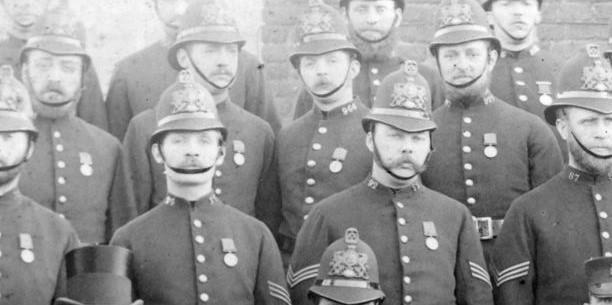

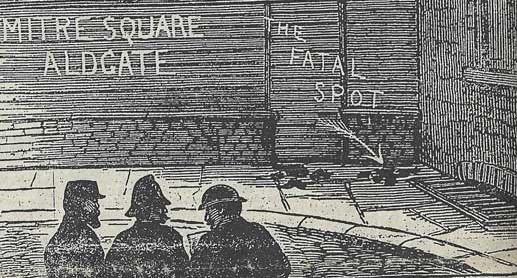
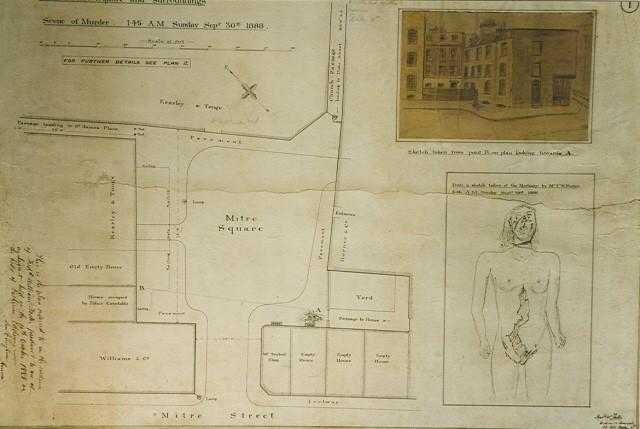
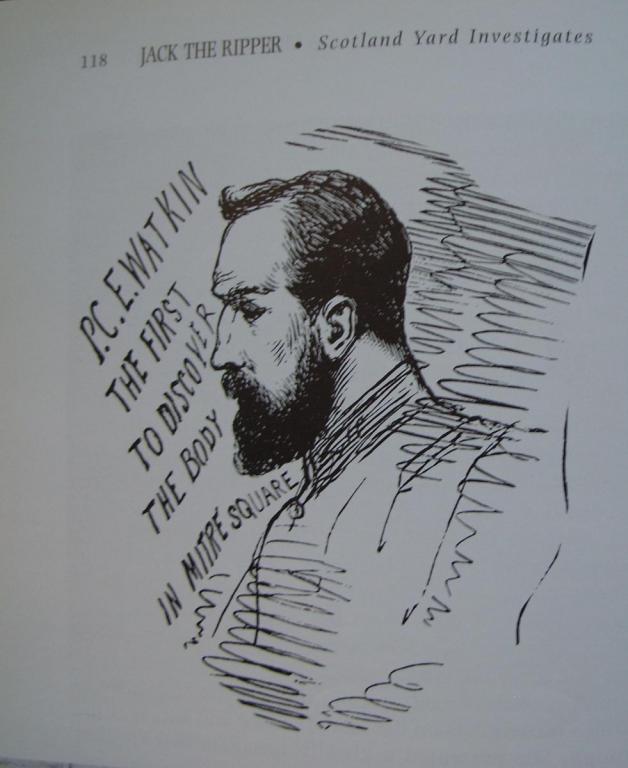
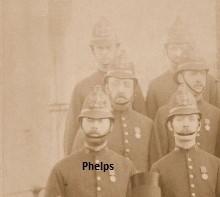
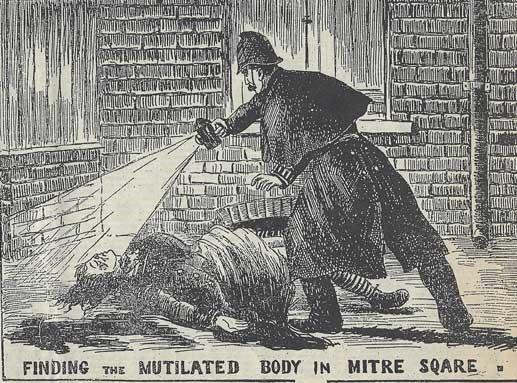


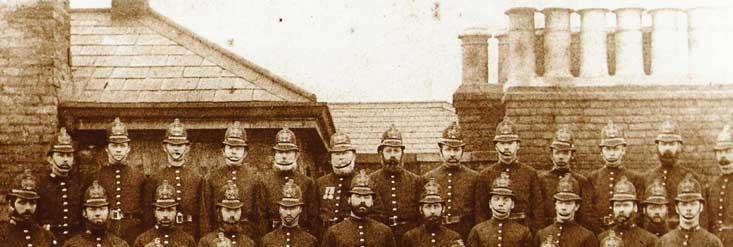

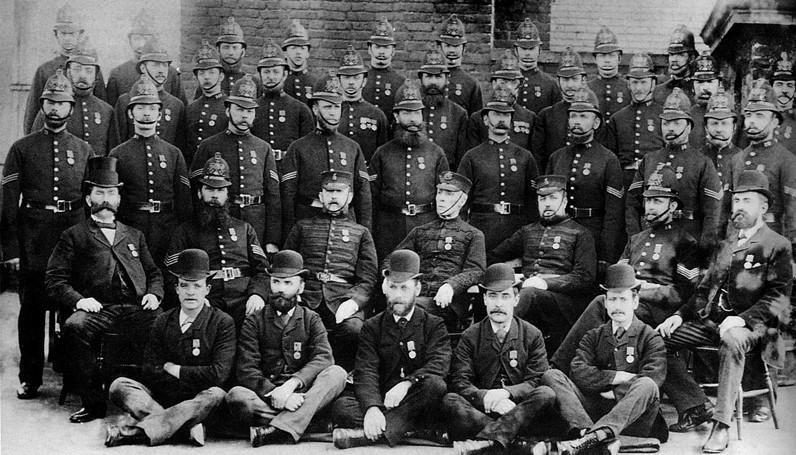
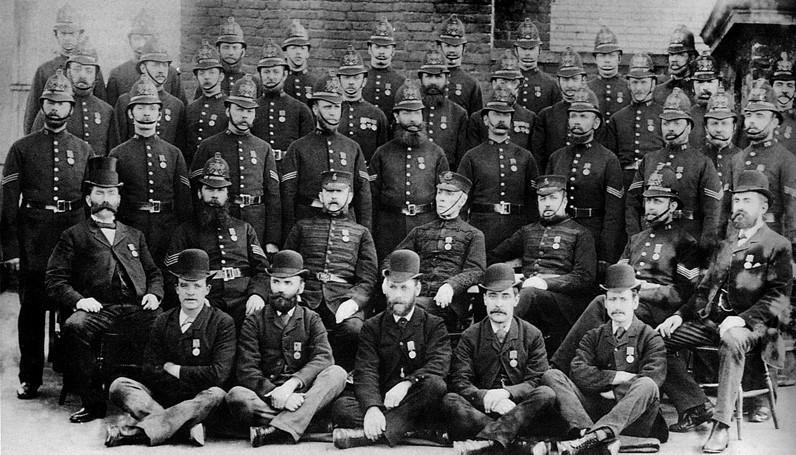



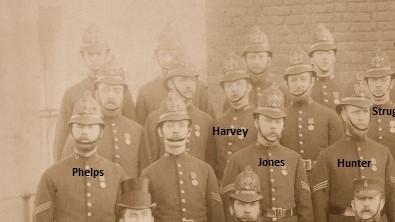
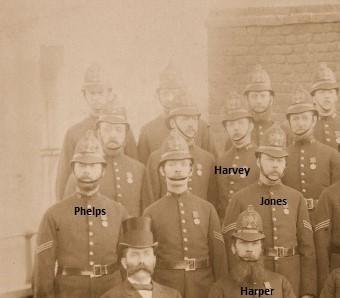
.jpg.e6b195056015ca83316690144668a864.jpg)